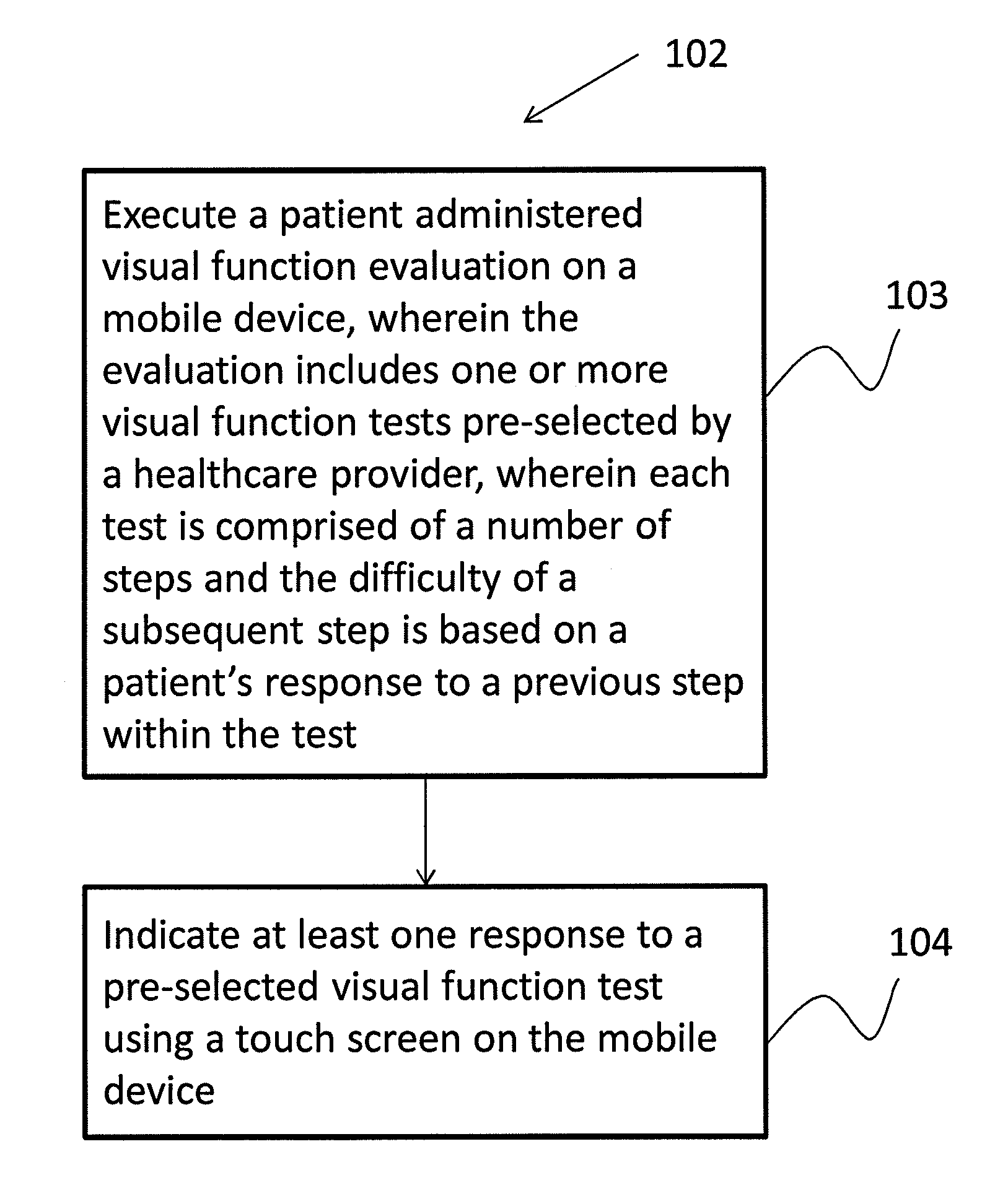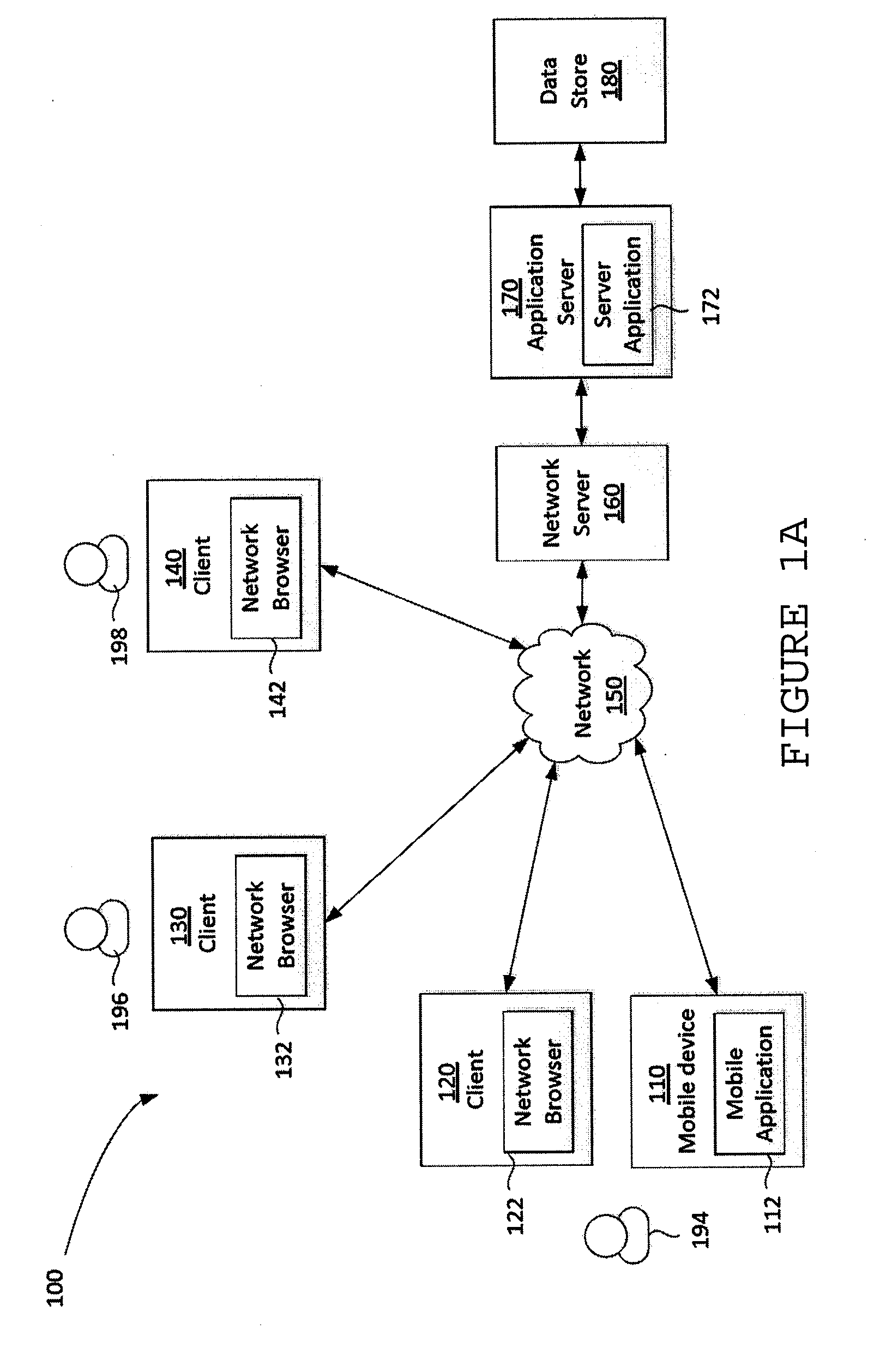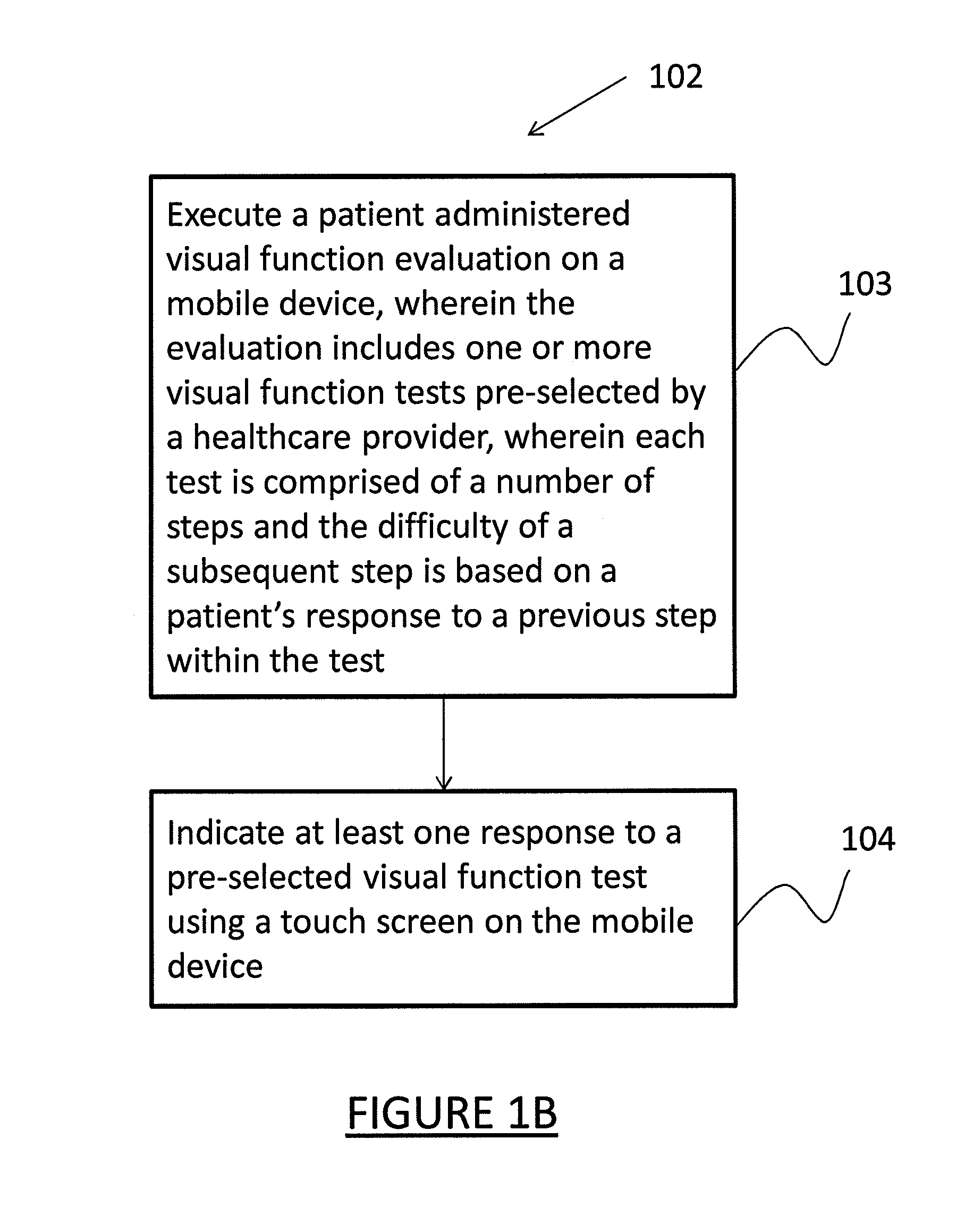System and method for providing analysis of visual function using a mobile device with display
a mobile device and visual function technology, applied in the field of system for analysis of visual function of a person, can solve problems such as loss of contrast discrimination, vision loss and even blindness, and loss of visual acuity
- Summary
- Abstract
- Description
- Claims
- Application Information
AI Technical Summary
Benefits of technology
Problems solved by technology
Method used
Image
Examples
example 1
[0157]A user receiving an intraocular eye injection can use the mobile device application to test visual function. The healthcare provider selects the visual function tests from the list of available test on the mobile device application for the user based on the intraocular eye injection treatment. The test data can be transmitted to the remote computer and tracked between injections. Different users will respond to the injections differently and have different periodicity between treatments. The test data can be analyzed to determine how the user's vision changes between treatments. The analysis can be used to predict when the user should receive the next injection. Tailoring the injection treatment to the specific user improves the efficiency of the treatment for the user.
[0158]The test data can also be used to detect a larger than usual decrease in the visual function of the user and provide an alert to the user and healthcare provider that treatment or evaluation by a healthcar...
example 2
[0159]A user with a dry macular degeneration disease can use the mobile device application to test the user for progression to wet macular degeneration disease. Distortion tests can be used to detect the presence of wet macular degeneration. The healthcare provider can select a distortion test, such as an Amsler grid, for the user. The user can take the distortion test on the mobile device. If the results of the distortion test indicate distortion then an alert can be generated for the user and healthcare provider to signal the need for evaluation of the user's visual function. The treatment programs are different between wet and dry macular degeneration diseases, thus the presence of wet macular degeneration disease can result in a different course of treatment for the user.
example 3
[0160]A user receiving a recurrent treatment can use the mobile device application to test their visual function. The test data is analyzed to determine a baseline level of performance for the user. The healthcare provider sets a delta level for the user. If the user's test data varies from the baseline level of performance by more than the set delta level then an alert is sent to the user and the healthcare provider. The alert can prompt the user's physician to review the visual function test data for the user and determine whether the user should visit to the physician's office for an evaluation. If the physician determines that the user should visit the physician's office a message from the physician can be sent to the user on the user's mobile device. The message can prompt the user to schedule an appointment.
PUM
 Login to View More
Login to View More Abstract
Description
Claims
Application Information
 Login to View More
Login to View More - R&D
- Intellectual Property
- Life Sciences
- Materials
- Tech Scout
- Unparalleled Data Quality
- Higher Quality Content
- 60% Fewer Hallucinations
Browse by: Latest US Patents, China's latest patents, Technical Efficacy Thesaurus, Application Domain, Technology Topic, Popular Technical Reports.
© 2025 PatSnap. All rights reserved.Legal|Privacy policy|Modern Slavery Act Transparency Statement|Sitemap|About US| Contact US: help@patsnap.com



